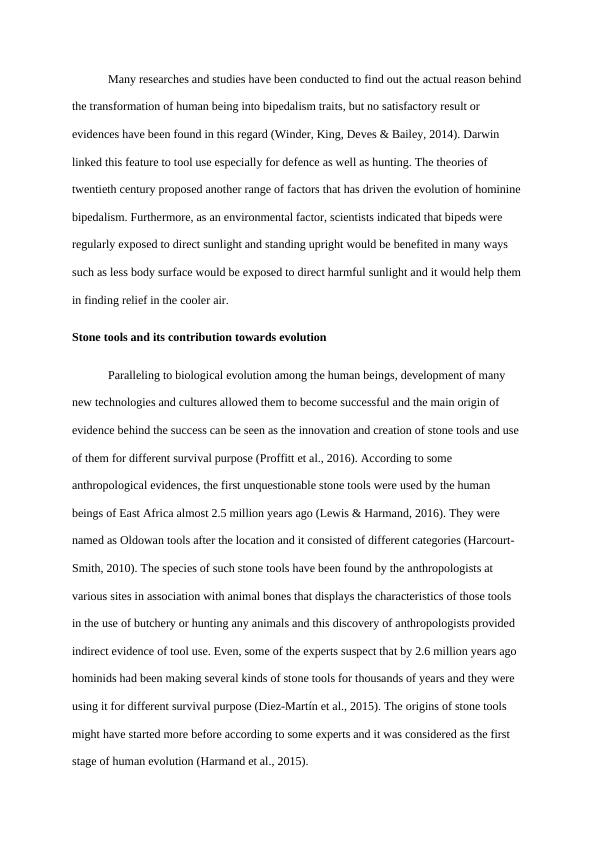History and Theoretical Framework of Human Bipedalism and Stone Tool Evolution
Research assignment in Physical Anthropology focusing on human origins and biological diversity within modern human populations.
8 Pages2351 Words267 Views
Added on 2023-06-03
About This Document
This paper discusses the history and background of human bipedalism, the development of stone-tool technology, and theoretical aspects of human bipedalism. It also highlights the origin of Homo sapiens and its modern anatomical pelvis structure.
History and Theoretical Framework of Human Bipedalism and Stone Tool Evolution
Research assignment in Physical Anthropology focusing on human origins and biological diversity within modern human populations.
Added on 2023-06-03
ShareRelated Documents
End of preview
Want to access all the pages? Upload your documents or become a member.
The Evolution of Quadrupedalism to Bipedalism
|8
|2117
|183
Species Diversity: Humans Vs. Chimpanzees
|6
|1137
|373
Hominin Homo erectus: Characteristics, Culture, and Society
|5
|1057
|174
Biological Anthropology Assignment PDF
|5
|1050
|61
Anthropology - Definition, Evolution, and Investigative Branches
|6
|1369
|236
Human Evolution Assignment PDF
|12
|2512
|122



